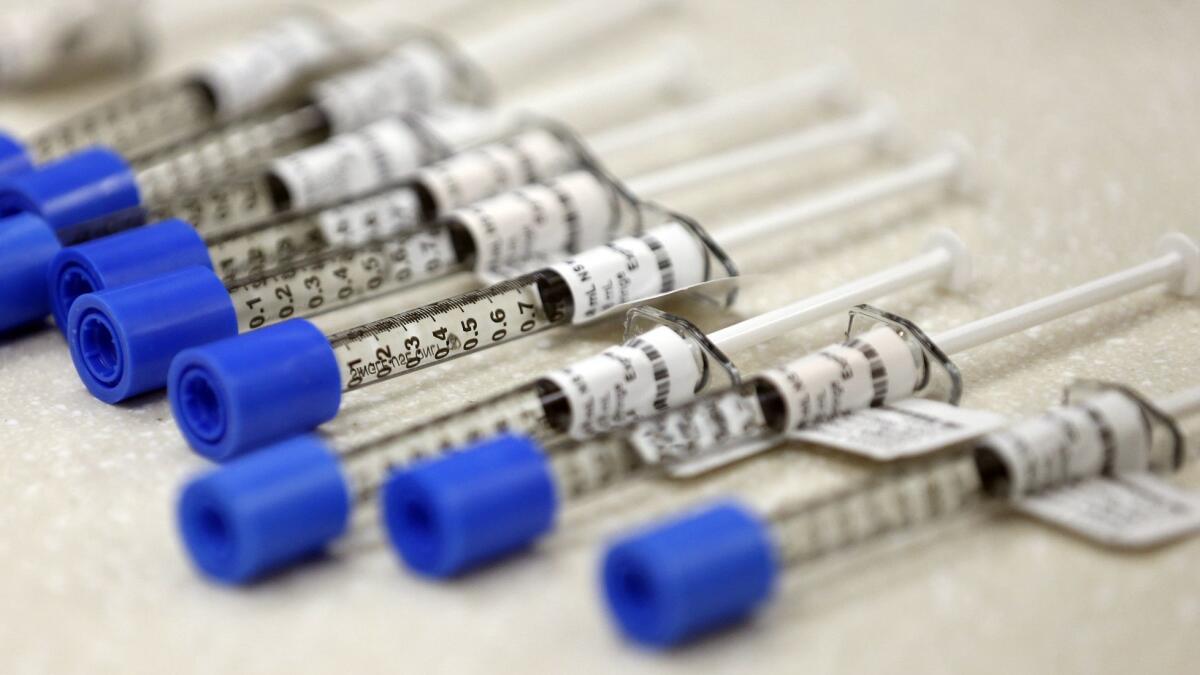Fentanyl drove drug overdose deaths to a record high in 2017 — about 200 a day — CDC estimates

Drug overdose deaths surpassed 72,000 in 2017, according to provisional estimates recently released by the national Centers for Disease Control and Prevention. That represents an increase of more than 6,000 deaths, or 9.5%, over the estimate for the previous 12-month period.
That staggering sum works out to about 200 drug overdose deaths every day, or one every eight minutes.The increase was driven primarily by a continued surge in deaths involving synthetic opioids, a category that includes fentanyl. There were nearly 30,000 deaths involving those drugs in 2017, according to the preliminary data, an increase of more than 9,000 over the prior year.
Deaths involving cocaine also shot up significantly, putting the stimulant on par with drugs like heroin and the category of natural opiates that includes painkillers like oxycodone and hydrocodone. One potential spot of good news is that deaths involving those latter two drug categories appear to have flattened out, suggesting the possibility that opiate mortality may be at or nearing its peak.
The CDC cautions these figures are early estimates based on monthly death records processed by the agency. The CDC adjusts these figures to correct for underreporting, since some recorded deaths are still pending full investigation. Final mortality figures are typically released at the end of the following calendar year.
The CDC updates these provisional numbers monthly. The recent inclusion of December 2017 means that a complete, albeit early, look at 2017 overdose mortality is now available for the first time.
Geographically, the deaths are distributed similarly to how they’ve been in prior years, with parts of Appalachia and New England showing the highest mortality rates. Once again, the highest rates were seen in West Virginia, with 58.7 overdose deaths for every 100,000 residents. Washington, D.C. (50.4), Pennsylvania (44.1), Ohio (44.0) and Maryland (37.9) rounded out the top five.
At the other end of the spectrum, the plains states had some of the lowest death rates. Nebraska had the fewest with 8.2 deaths per 100,000, a rate less than one-seventh the rate in West Virginia.
Despite the nationwide increase the CDC’s preliminary data also shows that a number of states, including North Dakota and Wyoming, saw their overdose rates fall relative to the prior year. Particularly significant were the decreases seen in Vermont and Massachusetts, two states with relatively high rates of overdose mortality.
Beyond that, the month-to-month data brings some potentially good news: Nationwide, deaths involving opioids have plateaued and even fallen slightly in recent months, from an estimated high of 49,552 deaths in the 12-month period ending in September 2017 down to 48,612 in the period ending January of this year. While it’s too early to say whether that trend will continue through 2018, those numbers are somewhat encouraging.
A chief concern among substance abuse experts is the current ubiquity of fentanyl, a synthetic opioid that’s roughly 50 times more potent than heroin. Because it’s cheap and relatively easy to make, it’s often mixed with other drugs like heroin and cocaine.
Policymakers have struggled to come up with an adequate response to the opioid crisis. Overdose deaths initially ballooned during the Obama administration, which was criticized by experts for being slow to respond to the problem. Last year the Trump administration declared the epidemic a “public health emergency” but allocated no new funding for states to address the issue. Patrick Kennedy, a member of the task force the administration convened to tackle the epidemic, criticized President Trump as “all talk and no follow-through” on opioids late last year.






